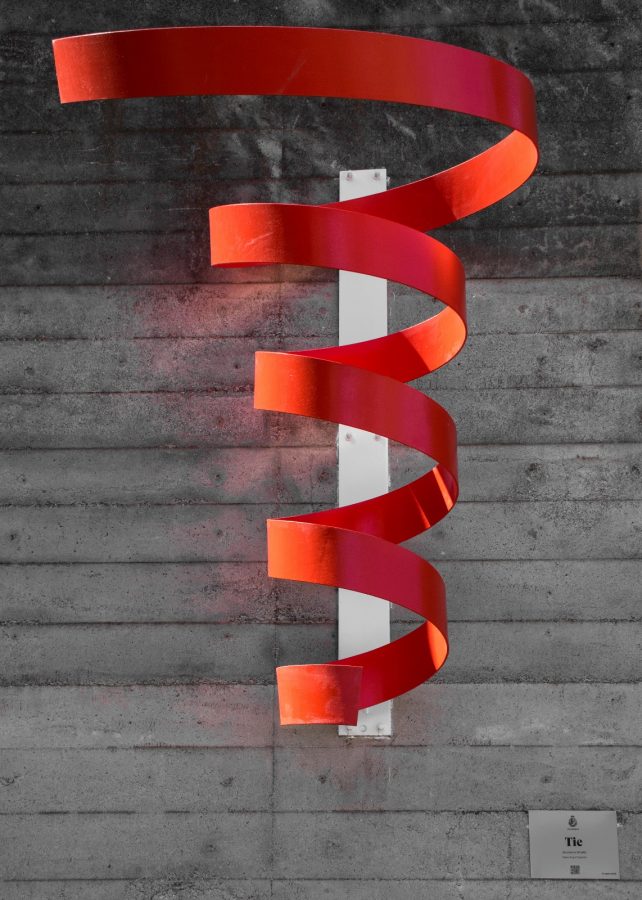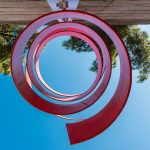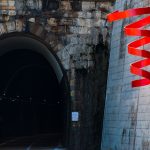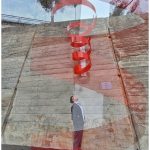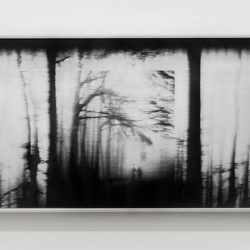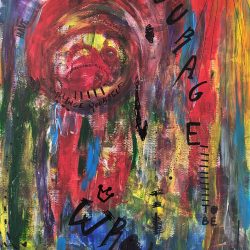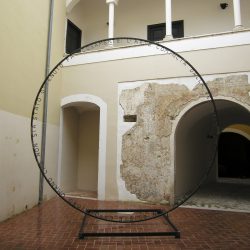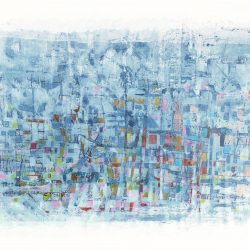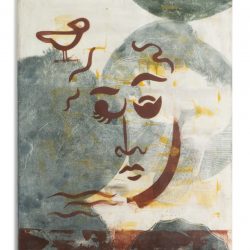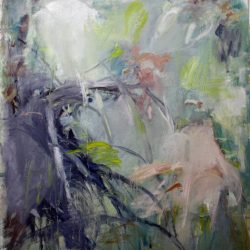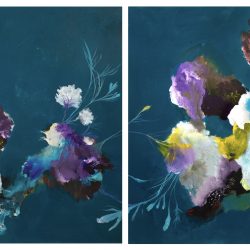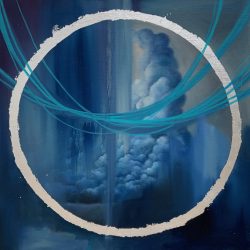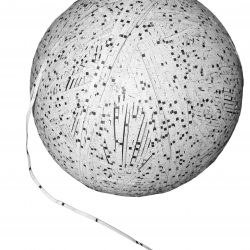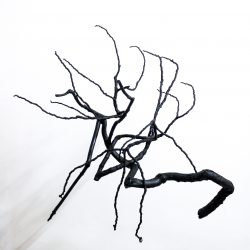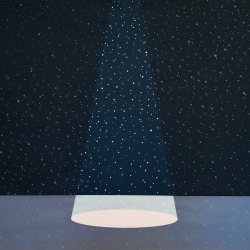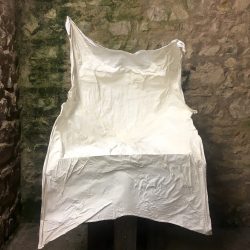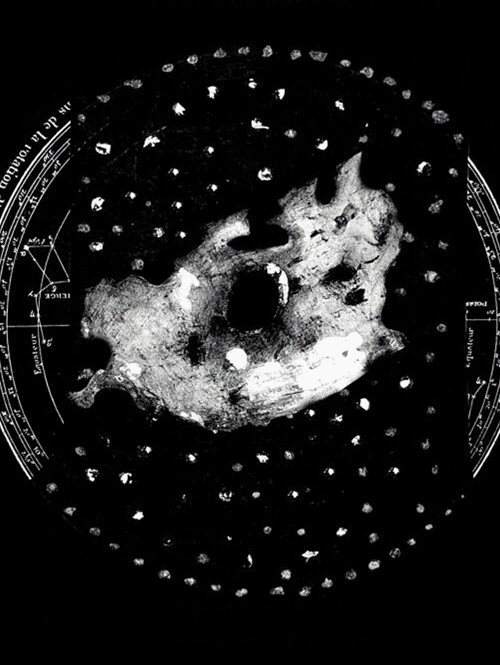work
TIE
| category | Installation |
| subject | Abstract |
| tags | |
| base | 100 cm |
| height | 330 cm |
| depth | 240 cm |
| year | 2025 |
iron painted with epoxy paints in vermilion red.
Tie (or “knot” in English) is the materialization, the macro-representation of the concept of bond: a close relationship unites Igor Grigoletto and the city of Imperia, where he trained by obtaining a diploma from the Art Institute; precious and fundamental years of study not only for his subsequent career, but also for their experiential and human value. All of the artist's work underlies an incessant return to this territory: his risseu, the sea pebbles and his fiscoli, fiber discs used for pressing olives, are characterized by a red cord which does not simply represent the material translation of the clear sign traced in the works on glass. In fact, this element must be understood in its double nature as a thread in a material sense (what is needed to bind) and in a symbolic sense as a thread of memory, which unites everything closely with the evocative power of memory. He ties a knot in a handkerchief so as not to forget, and here Grigoletto “knots” his material to envelop the environment and the work in a space/time continuum of mutual amplification of suggestions.
Starting from this assumption, Igor Grigoletto develops his own personal cognitive modality through which he enters into a relationship with the external environment, with the territory, with nature and with the elements that compose it.
Air, water, fire and earth interact - in different but astonishing ways - with the proposed work: a thin layer of mirrored glass that reflects and absorbs the magnificence of nature.
Through this installation created using rectangular mirrored glass, arranged to form a direction indicator, the artist reflects on the concept of knowledge and discovery, of visual and sensorial exploration, of territorial, morphological and anthropological analysis.
Just as the human being enters into a deep connection with what surrounds him through contact, so the artist enters into symbiosis with the surrounding territory through his reflection, an image that constantly changes both by remaining still and by moving his body around it.
It is the environment that communicates with the subject who looks, it is the outside that draws the attention of the one who tries to read - through non-tactile but visual contact - the signals arriving from what is outside of us.
The thin layer of mirrored glass positioned in direct contact with the earth and indirectly with the sky, thus acts as a cognitive modality, as an empirical tool useful for establishing that intimate form of perception that goes beyond the senses and attempts to push beyond, beyond the conventional form of conceptual acquisition.
The Salema Eco Camp Natural Park is inscribed in the work, inhabits it and gives it life through a dual vision of the world; the work is able to take on many forms, what is indicated by the union of the two mirrors can be read as a suggestion of gaze, a suggestion to direct attention towards the infinite possibilities that the world is able to offer.
The four elements, the energy released and the vibrant force are reflected in the work and in the gaze of those who approach it to experience it.
4 mm extra-clear mirrors ground on the edges
Tie (or “knot” in English) is the materialization, the macro-representation of the concept of bond: a close relationship unites Igor Grigoletto and the city of Imperia, where he trained by obtaining a diploma from the Art Institute; precious and fundamental years of study not only for his subsequent career, but also for their experiential and human value. All of the artist's work underlies an incessant return to this territory: his risseu, the sea pebbles and his fiscoli, fiber discs used for pressing olives, are characterized by a red cord which does not simply represent the material translation of the clear sign traced in the works on glass. In fact, this element must be understood in its double nature as a thread in a material sense (what is needed to bind) and in a symbolic sense as a thread of memory, which unites everything closely with the evocative power of memory. He ties a knot in a handkerchief so as not to forget, and here Grigoletto “knots” his material to envelop the environment and the work in a space/time continuum of mutual amplification of suggestions.
Starting from this assumption, Igor Grigoletto develops his own personal cognitive modality through which he enters into a relationship with the external environment, with the territory, with nature and with the elements that compose it.
Air, water, fire and earth interact - in different but astonishing ways - with the proposed work: a thin layer of mirrored glass that reflects and absorbs the magnificence of nature.
Through this installation created using rectangular mirrored glass, arranged to form a direction indicator, the artist reflects on the concept of knowledge and discovery, of visual and sensorial exploration, of territorial, morphological and anthropological analysis.
Just as the human being enters into a deep connection with what surrounds him through contact, so the artist enters into symbiosis with the surrounding territory through his reflection, an image that constantly changes both by remaining still and by moving his body around it.
It is the environment that communicates with the subject who looks, it is the outside that draws the attention of the one who tries to read - through non-tactile but visual contact - the signals arriving from what is outside of us.
The thin layer of mirrored glass positioned in direct contact with the earth and indirectly with the sky, thus acts as a cognitive modality, as an empirical tool useful for establishing that intimate form of perception that goes beyond the senses and attempts to push beyond, beyond the conventional form of conceptual acquisition.
The Salema Eco Camp Natural Park is inscribed in the work, inhabits it and gives it life through a dual vision of the world; the work is able to take on many forms, what is indicated by the union of the two mirrors can be read as a suggestion of gaze, a suggestion to direct attention towards the infinite possibilities that the world is able to offer.
The four elements, the energy released and the vibrant force are reflected in the work and in the gaze of those who approach it to experience it.
4 mm extra-clear mirrors ground on the edges



